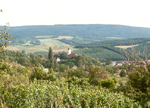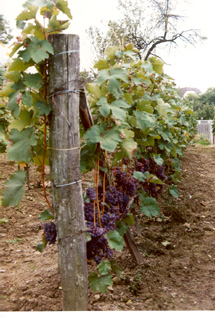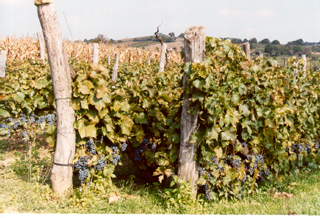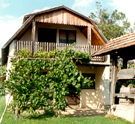
View of Bakonycsernye from Vineyards
XXXXXXXXXXXXXXXXXXXXXXXXXXXXXXXXXXXXXXXXXXXXXXXXXXXXXXXXXXXXXXXXXXXXXXXXXXXXXXXXXXXXXXXX
WINE DAYS OF MOR FESTIVAL HELD FIRST FRI, SAT & SUN. EVERY YEAR IN OCT
Mor, Hungary is in the Bakony region of Hungary, near Székesfehérvár in Fejér Megye (County)
Excellent You Tube Video gives a great overview of festivities, parade, wine tasting, voting for
Wine Days Queen of Mor, entertainment, & other activities for guests:
https://www.youtube.com/watch?v=JJGTzs4Whh0
XXXXXXXXXXXXXXXXXXXXXXXXXXXXXXXXXXXXXXXXXXXXXXXXXXXXXXXXXXXXXXXXXXXXXXXXXXXXXXXXXXXXXXXX
Delightful videos showing off the magnicent town of Mór, Hungary: the natural environment most important of all the VINEYARDS, charm, culture.
https://www.youtube.com/watch?v=Xc2OtRn5tQk
Another wonderful video which features vineyards, gastronomia, and the beautiful countryside:
https://www.youtube.com/watch?v=whDI5ZqfjTM
XXXXXXXXXXXXXXXXXXXXXXXXXXXXXXXXXXXXXXXXXXXXXXXXXXXXXXXXXXXXXXXXXXXXXXXXXXXXXXXXXXXXXXXX
LIST OF WINECELLARS AROUND MOR, HUNGARY AND SURROUNDING TOWNS:
https://www.geszlerpince.hu/upload/site/Punkosdi_Nyitott_Pince_Napok_MORI_BORVIDEK_9a29bab3833fae33d35e.pdf
XXXXXXXXXXXXXXXXXXXXXXXXXXXXXXXXXXXXXXXXXXXXXXXXXXXXXXXXXXXXXXXXXXXXXXXXXXXXXXXXXXXXXXXX
OPPORTUNTIES FOR WINE TASTING IN THE VICINITY OF MÓR, HUNGARY AND THE VÉRTES MOUNTAINS:
https://hetkut.hu/hetkuti-wellness-hotel-mor-hungary/programs-mor-vertes-bakony
XXXXXXXXXXXXXXXXXXXXXXXXXXXXXXXXXXXXXXXXXXXXXXXXXXXXXXXXXXXXXXXXXXXXXXXXXXXX
Belecz Pince (Belecz Wincellar) is located in Western Hungary:
(Dunantuli) in the Vértes Mountains near Mór, Hungary
which I recommend visiting ...
60 - 70 km west of Budapest. Lovely winecellar and beautiufl vineyards located in the Vértes Mountains.
Sorry they no longer have a personal webpage but I *did* locate some links where one can still view
some of the vineyards and receive directions on how to get there ...
http://www.falusiturizmus.hu/hu_HU/services/622/belecz-pince.html
Another website to the magnificent views at Belecz Pince (Belecz Winecellars located in Csákberény, Hungary
http://www.orond.hu/index.php?option=com_content&view=article&id=2&Itemid=11&lang=hu
Discovered another link to this beautiful vineyard ..
http://www.utazzitthon.hu/belecz-pince-csakbereny.html
XXXXXXXXXXXXXXXXXXXXXXXXXXXXXXXXXXXXXXXXXXXXXXXXXXXXXXXXXXXXXXXXXXXXXXXXXXXXX
XXXXXXXXXXXXXXXXXXXXXXXXXXXXXXXXXXXXXXXXXXXXXXXXXXXXXXXXXXXXXXXXXXXXXXXXXXXXXXXXXXXXXXXXX
2007 VIDEO OF GRAPE HARVEST BAKONYCSERNYE, HUNGARY (about 110 kilometers west of Budapest)
http://www.youtube.com/watch?v=L3XUQ2Oh8Mc
HUNGARIAN TRADITIONS DURING HARVEST:
Video explains/shows Harvest traditonal food preparation:
http://www.youtube.com/watch?v=L3XUQ2Oh8Mc
HUNGARIAN TRADITIONS/DRINKING SONGS/MUSIC
December 13-a - Luca-nap - a Sugalló együttes táncházában.
http://www.youtube.com/watch?v=8azbCq8RvIA
“Luca Nap” FROM MAGYAR MARKETING
————————————————---------------------
http://magyarmarketing.com/blogs/hungarian-touch/a-hungarian-touch-december-and-christmas
December 13th is the name day of Luca. There are many folk customs and superstitions associated with this day. For girls, many customs related to Luca Nap can foretell something about their future husband. Another custom for Luca Nap is related to money. If you want to be rich in the coming year, don’t spend even one penny on the 13th! But if someone gives you money on that day, it means luck for you. People may also sow wheat into a cup on Luca Nap. If your wheat grows in thick and high by December 24th, it means that you will be prosperous in the coming year.
XXXXXXXXXXXXXXXXXXXXXXXXXXXXXXXXXXXXXXXXXXXXXXXXXXXXXXXXXXXXXXXXXXXXXXXXXXXXXXXXXXXXXXXXXXXXXXXXXXXXXXXXXXXXXXXXXXXXXXXXXXXXXXXXXX
The Romans were among the first to bring root-stock from distant parts of the empire and plant them on the sunny hillsides of what is now known as Szekszard and Villany. The full-bodied red wines for which these regions are world reknown were also recognized in the past. The tradition of Hungarian viticulture has ancient, deep, and winding roots ...
READ ABOUT WINE VARIETIES:
Furmint, Harslevelu, Tokaji, Kadarka, Kekfrankos
FIVE WINE-GROWING REGIONS:
Tokaj, Villany, Szekszard, Eger, and Balaton.
DISCOVER THE BADACSONY WINE
Read about the region. View vineyards.
View photos of peasant wedding.
Select "welcome".
CLICK Friends of Wine
WINE REGIONS
Following is adapted/revised from
Grossman's Guide to Wines, Beers, and Spirits
(7th ed. rev.)
by Harold J. Grossman
Macmillan: NY, NY.
Wine making is an important part of Hungarian agriculture. 50 of the 63 megye (counties) of Hungary produce wine. There are five main wine growing districts in Hungary. The first four are rough and mountainous with topsoil of volcaninc origin contributing to the fiery character of the wine from these regions. The foremost of these is the Tokaj Hegyalja which is northeast around Eger and Debro:. Next is the Northern Transdanubia, which includes Sopron and the largest lake in Europe, Lake Balaton. Badacsony and Tihany are located on the northern shore of Lake Balaton, where the finest white wines are produced due to the more moderate climate there. Somlo is the location of an extinct volcano, where the soil is especially suitable for vinticulture.
Also located in the Northern Transdanubia is Mor and the Vertes Mountains, which is home of the famous "Ezer Jo" bor meaning, "A thousand good", that is, "the best there is". The fourth region is Southern Transdanubia, i.e., Dunantuli (West of the Danube), near the Yuogosalvian border where Villany-Pecs and Szekszard regions produce both red and white table wines. Lastly, the Great Plain of Hungary (Alfold) produces wines, of lesser quality because of the sandy soil. However, one good quality wine from the region is "Magyar Rieszling".
~~<>~~<>~~<>~~<>~~<>~~<>~~<>~~<>~~<>
PHOTO BY Erika Borsos:

Bakonycsernye purple grapes
~~<>~~<>~~<>~~<>~~<>~~<>~~<>~~<>~~<>
WINE REVIEWS
Here are some wine reviews adapted & revised from the "Wine Pro" columns of author, Eileen GP Brown, from Budapest Sun on-line newspaper. To read more of her fine articles. Go to "Archives" of the magazine. Select any volume. Scroll toward bottom of index. Find "Wine Pro" and author's name.
The fiery, tangy "Ezer Jo" Bor ("A Thousand Good" Wine, meaning the best, the finest) has a hint of green. It is the predominant variety grown in the Vertes Mountains.
Another variety from Mor is the "Gerwurtztraminer" ("Spicy Tramini) a slowly fermented wine. The acids are soft, the wine has a toasted nutty flavor with buttery tones and a hint of oak. Quite excellent!
Kekfrankos of Sopron has a purple hue and a fiery kick at the end, due to its trademark acid content.
There is an irresistible spicy, fruity aroma, reminds one of plums, blueberries, and cherries rolled into one flavor. This purple pearl of a grape produces a flavorful taste that packs a powerful punch!!!
Budapest Sun, July 11, 2002,
Vol. X, Issue 28:
Direct quote from Eileen GP Brown's Review:
"HILLTOP'S SOPRONI
SAUVIGNON BLANC
Special Reserves is a very pale yellow-green. It gives off stunning degrees of the "weedy" nose that bespeaks the grape variety, with a whisper of a floral note and an altogether multi-faceted bouquet fully ripened fruit."
The full-bodied Merlot produced in Tihany can rival any of those produced in France. With a deep luminous red hue and aromatic fragrance of strawberry, raspberry, & blackberry this wine will suit any palate!
Furmint, from Somlo located in the northern hills of Lake Balaton, is well known for its aromatic bouquet. However, most interesting is that natural healing properties have been attributed to this variety of wine. But then I *have* heard people drink wine & other spirits for "medicinal purposes" before :-) Erika
Somlo is an extinct volcano, with soil that has excellent properties for wine growing.
~~<>~~<>~~<>~~<>~~<>~~<>~~<>~~<>
OTHELLO GRAPES
Bakonycsernye, Hungary

~~<>~~<>~~<>~~<>~~<>~~<>~~ <>~~<>
GRAPE HARVEST FESTIVITIES/CUSTOMS
George Lang in his book "The Cuisine of Hungary"
(NY: Atheneum Press, c. 1983) discusses the following grape harvest festivites and customs (pages 100 - 102)
It is an ancient custom that the harvesters, when finished, weave either a wreath or a huge cluster of grape leaves and grapes, which is usually carried on poles by four or more persons. The procession consists of a band followed by the harvesters, then the couple that finished gathering the grapes last; finally come two flag bearers, followed by girls dressed in white with grape leaves in their hair. The pole bearers also wear elaborate grape wreaths.
Sometimes the vincellar (winemaster or overseer) dons a fancy hat, hangs a grape wreath on his right arm, and holds in his left hand a szuretifa harvest cane, a walking stick decorated with grapes and flowers. The entire procession, including the harvesters, proceeds from the hill vineyard to the vintner, singing, shouting, and stopping every now and then to accept a glass of wine offered them. Finally, they arrive at the vintner's village home; and the vincellar, lifting his hat, delivers a short, flowery speech, giving the wreath to the mistress of the house and the cane to the master. In some villages, they hang the grape-cluster in the ceiling of the "White Room", after which the mulatas (merrymaking) really gets underway in earnest. Often the harvest starts by "capturing" the boss and tying him up with young shoots of the grapevine. He is released only if he pays the ransom by serving wine to everyone.
Humorous contests color the festivities, for instance, the vineyard-watchman play, which goes something like this: The garden of the restaurant, or yard where the festivities take place, is transformed into a vineyard by hanging grapes. Half the men become the watchmen and the other half fill the role of betyar (highway robbers, i.e. outlaws), who try to steal the grapes. If they are caught, a fake court metes out a sentence.
Many of the dances are clever enough to have been choreographed by Balanchine. My favorite is the Hoop Dance, which uses metal hoops of the barrels with great imagination. The customs represented in these dances are often an acting out of proud or kidding quotations of the past, such as those that ridicule Turkish figures or Hapsburg soldiers.
In other villages the harvesters parade on horseback and four husky lads carry the "wine king",
sitting on a litter made of wine barrels. Oddly, the wine king is always a little boy with a paper crown on his head, a moustache made of corn husks, and a beard of the sheepskin suba , or cape.
At nightfall, the gypsies arrive and start playing the hallgato - the slow quiet songs. later on they will play the fast, furious csardas for dancing. One traditional slow one goes like this:
The grapes will soon be ripe
And the vines will soon be orphaned
You will be orphaned too my little angel
Because I must march with the Army.
Many vineyard owners sell their own wine in the villages or towns. If the wine comes from garden vineyards the sign outside the vineyard owner's door is a pine branch. If, however, it comes from the hill vineyards, ivy is put outside the door ...
Of the four main ingredients prescribed for happiness by an old Hungarian slogan --- wine, wheat, peace, and a beautiful wife --- wine is mentioned first. Until quite recently the entire country's welfare depended on the quality and quantity of the grape and wheat harvest. The harvesting was a loud, colorful, important festival, and happily it still retains the same joyous spirit throughout the country.








